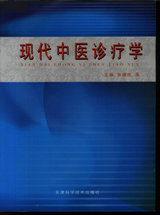
主要责任者: 张增杰,刘志敏,孙瑞玲等;丁洪越,王志萍,王惠锋等
责任方式: 主编;副主编
出版者: 天津科学技术出版社
出版地: 天津
字数: 865 千字
页码: 1-458
开本: 16
中图分类号: R24
装帧: 简
语种:中
定价:68.00
出版时间:2008-05
丛书多卷书否:否
书目简介:本册工具书共收录1008条词条。
被引频次:5
- Dickey,James
- Dickinson,Emily
- Dickinson,John
- dicotyledons
- dictatorship
- dictatorship of the proletariat
- diction
- dictionary
- Dicynodon
- didactic literature
- Diderot,Denis
- didgeridoo
- Didion,Joan
- Dido
- Didot,Francois
- Didot,Frannois Ambroise
- Didot,Pierre and Didot,Firmin
- Didrikson,Mildred Babe
- Diefenbaker, John George
- dieffenbachia
- Diego Garcia
- Dieguehno
- Dieldrin
- dielectric
- Diels,Otto Paul Hermann